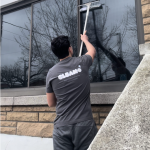Diving with manta rays in Nusa Penida is one of the most unforgettable marine experiences available in Bali. These gentle giants are known for their calm presence, massive wingspans, and the awe they inspire in anyone lucky enough to share the water with them. Nusa Penida, located just southeast of Bali, has gained international fame for its reliable manta sightings, particularly at dive sites like Manta Point. For divers of all levels, this is a bucket-list adventure that combines thrilling wildlife encounters with the serene beauty of Bali’s underwater world.
Why Nusa Penida is a Prime Location for Manta Rays
Nusa Penida is part of a protected marine area, which helps maintain the health of its reefs and resident marine life. Manta Point, located on the southern coast of the island, is a cleaning station where manta rays regularly return to have parasites removed by smaller fish. This predictable behavior makes it one of the most reliable places in the world to see reef manta rays in the wild.
The consistent presence of these animals is one reason Nusa Penida has become such a well-regarded dive destination. The dive site itself is relatively shallow, with a depth of around 12 to 20 meters, allowing for long bottom times and relaxed observation.
When is the Best Time to Dive with Manta Rays?
While manta rays can be spotted year-round in Nusa Penida, the best conditions are typically between April and November. During Bali’s dry season, water visibility tends to improve, and seas are generally calmer, which makes diving more enjoyable and sightings more frequent.
Manta rays are not migratory in the traditional sense but are known to follow ocean currents and food availability. The nutrient-rich upwellings around the island draw in plankton, which manta rays feed on by filtering seawater through their wide, open mouths. Divers have a good chance of seeing multiple mantas circling the cleaning stations or gliding through the blue in search of food.
What to Expect During Your Dive
Most dive trips to Manta Point depart from Sanur or Padang Bai, with boat rides to Nusa Penida taking roughly 45 to 60 minutes depending on sea conditions. Once at the site, divers can expect an impressive mix of marine life beyond just manta rays. Common sightings include pufferfish, sweetlips, moray eels, and schools of fusiliers.
The seafloor is mostly rocky, with scattered patches of coral. Manta rays may approach within a few meters, giving divers incredible photo opportunities. However, it is important to stay low, remain still, and avoid making sudden movements. This respectful behavior increases the chances of a prolonged and peaceful encounter.
Is It Suitable for Beginners?
Manta Point dive site is often considered suitable for beginner divers, especially during calm conditions. However, currents can sometimes be strong, particularly around the edges of the dive site. For this reason, it is generally recommended that divers have at least an Open Water certification.
Dive centers like Bali Aqua provide experienced guides and thorough briefings to ensure safety and comfort. Many also offer Discovery Scuba Diving to Nusa Penida programs that allow non-certified guests to join manta dives under the supervision of a professional instructor. These programs are ideal for travelers who want to experience the magic of diving without committing to a full certification course.
Responsible Diving Practices
Protecting manta rays and their environment is a shared responsibility between dive operators and guests. Divers should always follow the code of conduct provided during pre-dive briefings. Key practices include:
* Maintain a minimum distance of 3 meters from any manta ray
* Do not touch or chase the animals
* Avoid flash photography
* Stay low and avoid blocking their swimming path
Many operators in Nusa Penida are aligned with marine conservation groups such as Marine Megafauna Foundation and Manta Trust. Supporting dive centers that promote sustainable practices helps ensure the longevity of these ecosystems.
Why This Experience Stands Out
What makes diving with manta rays so special is the sense of scale and serenity they bring. Weighing up to 1,400 kilograms with wingspans reaching 5 meters or more, manta rays glide through the ocean with surprising grace. Despite their size, they are filter feeders with no interest in humans. Their peaceful nature makes each encounter feel profound and humbling.
Additionally, diving in Nusa Penida offers a chance to explore more than just one site. Many day trips include multiple dives, such as combining Manta Point with Crystal Bay or Mangrove Reef. This allows divers to experience different environments and maximize their time underwater.
Conclusion
Diving with manta rays in Nusa Penida is not just a highlight of diving in Bali. It is one of the most memorable experiences in all of Indonesia. With its accessible location, excellent dive infrastructure, and high probability of manta sightings, Nusa Penida continues to be a favorite for divers from around the world. By choosing reputable operators like Bali Aqua and following responsible diving practices, you can enjoy this extraordinary adventure while contributing to marine conservation. If you are planning a diving trip to Bali, make sure a visit to Manta Point is at the top of your list.


